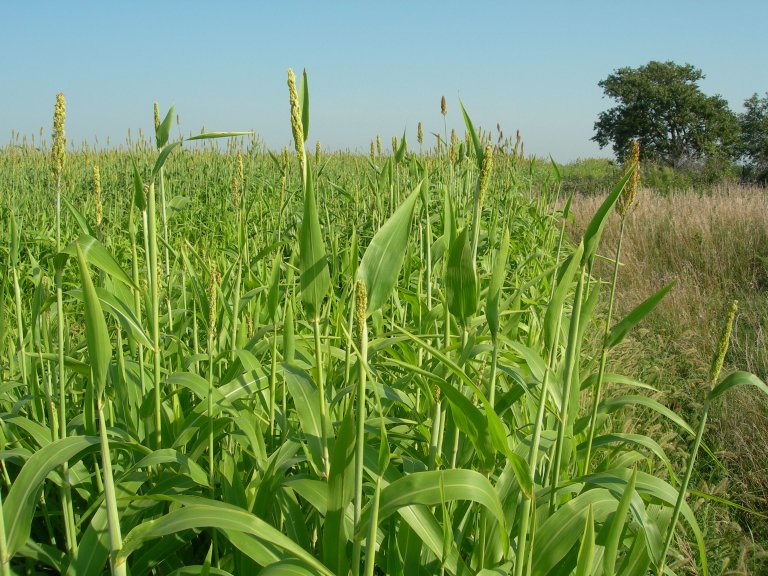
By Dennis Bauer UNL Extension Educator
The quality of any forage depends primarily on the stage of growth when harvested. Protein levels can exceed 10% and energy levels of total digestible nutrients (TDN) can exceed 60% when forages are harvested at the right growth stage. This level of protein and energy will in almost all cases meet the cow’s requirement for protein and TDN even during lactation.
To achieve these levels of protein and energy in forages they must be harvested at the boot to late milk stage. Boot stage on most plants occurs when the seed heads are just about ready to emerge and be visible from the stem of the plant. Late milk stage is when milk-like liquid can be squeezed from the seeds in the emerged head. Research data from the University of Nebraska and other Universities demonstrates that forages, like cool season annuals such as oats, barely, triticale, spring wheat as well as summer annuals like teff, forage sorghum, Sudan crosses and millet can have protein vales of 10% to 14%. The energy values of these forages can also be quite high (59% to 63% TDN).
Trials conducted by Dr. Jerry Volesky UNL Extension Forage and Range Specialist located in North Platte, Nebraska reported the following results from forage trials conducted in 2007 (Table 1 - http://go.unl.edu/8ofk) and 2012 (Table 2 - http://go.unl.edu/xvcr).
Perennial cool season grasses can also be of very high quality. For example, Smooth Brome grass harvested when seed heads are half emerged can test upwards of 16% crude protein and 61% TDN. Other cool season grasses such as Orchard grass, Intermediate and Pubescent Wheat grasses can contain similar protein and TDN levels when harvested at late boot to early head emergence growth stage.
It is possible to harvest forages that test high enough in crude protein and energy to meet a cows requirement even during lactation. For example, a 1300 lb. mature cow with 20 lbs. peak milk will require a diet that contains 10% crude protein and 60% TDN. A 1,100 pound heifer 40 days after calving will require a ration containing 11% crude protein and 62% TDN (these ration requirements come from the Nutrient Requirements of Beef Cattle (http://books.nap.edu/catalog.php?record_id=9791).
When forages are cut early to obtain higher quality some yield will be lost in quantity, however, the trials that Dr. Volesky conducted clearly show that acceptable yields can be obtained even when harvesting early to capture very high quality forage.
Forages containing over 8% crude protein and 53% TDN are adequate for maintenance of dry pregnant cows. If the forage tests over these values, then the cows will gain weight (body condition) when fed these higher quality forages.
A webinar has been recorded and is available on the UNL Beef web page (http://beef.unl.edu/balancing-for-protein-and-energy-with-forages). The title of the webinar is Balancing the Ranch for Protein & Energy with Forages.
For more information on harvested high quality forages contact:
Dennis Bauer
UNL Extension Educator
Ainsworth Ne.
dbauer1@unl.edu
Ph.1-800-634-8951
Cell 402-760-1549